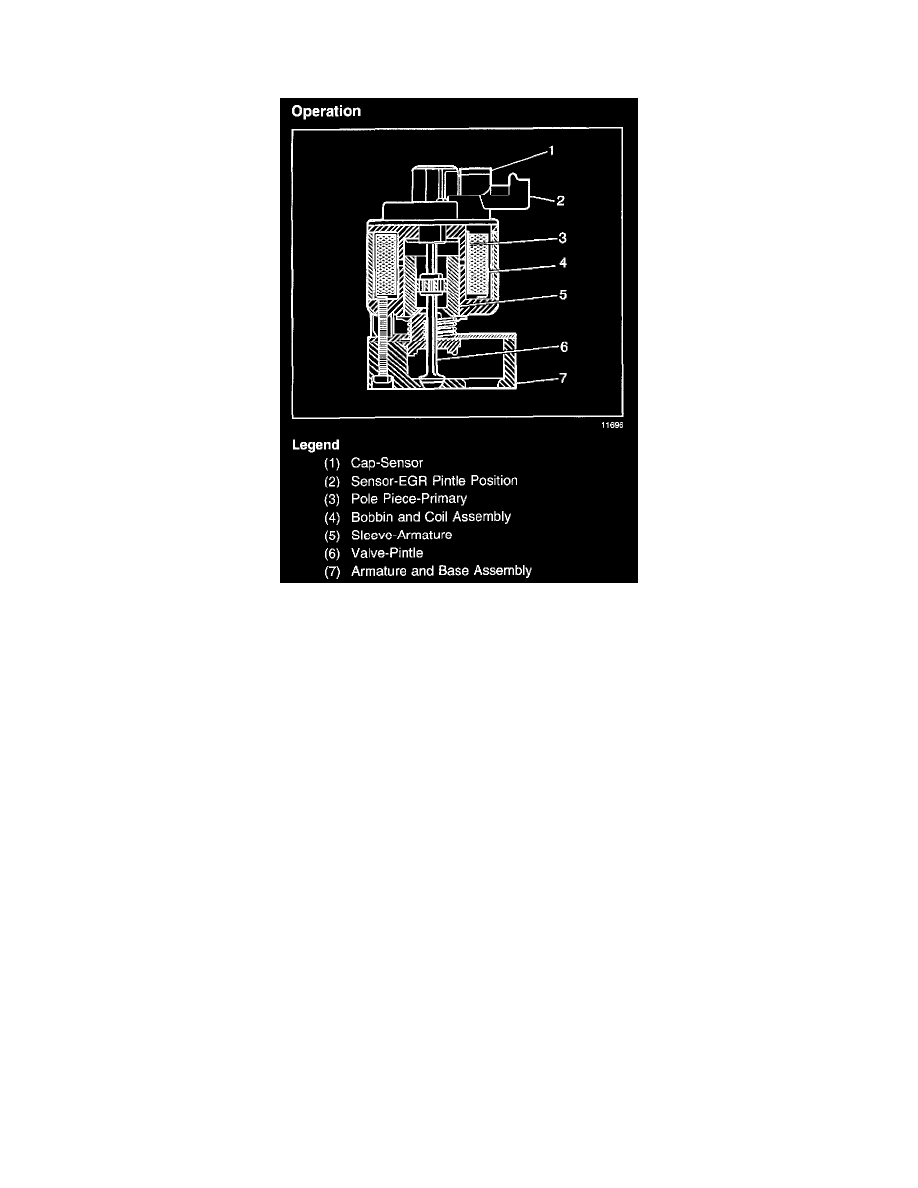C 1500 Yukon XL 2WD V8-5.3L VIN T (2001)

EGR Valve: Description and Operation
Operation
Operation
The EGR valve is designed to accurately supply exhaust gases to the engine without the use of intake manifold vacuum. The EGR valve controls the
exhaust flow into the intake manifold from the exhaust manifold through an orifice with a Powertrain Control Module (PCM) controlled pintle. The
PCM controls the pintle position using inputs from the Engine Coolant Temperature (ECT) sensor, the Throttle Position (TP) sensor, and the manifold
absolute pressure (MAP) sensor. The PCM commands the EGR valve in order to supply the correct amount of exhaust gas recirculation for the current
engine operating conditions. This can be monitored on a scan tool as the Desired EGR Position.
The PCM monitors the position of the EGR valve through a feedback signal. The PCM supplies a 5.0 volt reference and a ground to the EGR valve. A
voltage signal representing the EGR valve pintle position is sent to the PCM from the EGR valve. This feedback signal can also be monitored on a scan
tool as EGR Position Sensor and is the actual position of the EGR pintle. The EGR Position sensor should always be near the commanded or Desired
EGR Position.
The EGR valve is usually activated under the following conditions:
^
The engine is warm.
^
The engine is above the idle speed.
